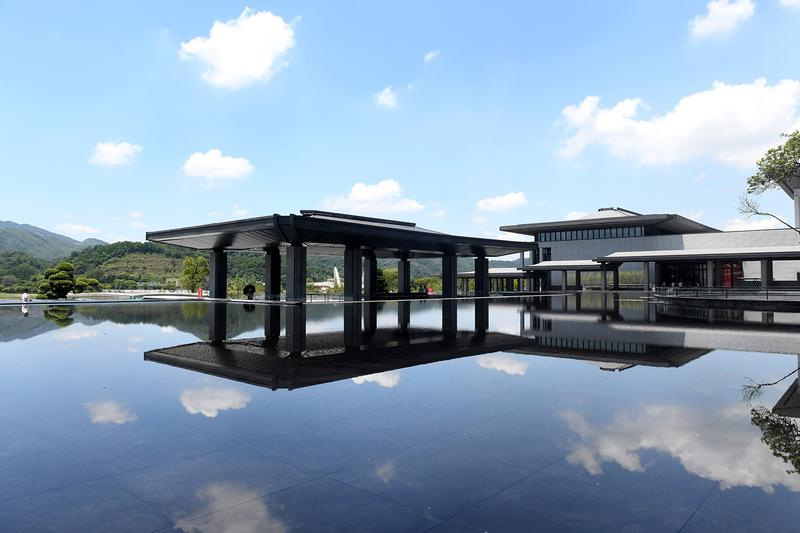 Guangzhou. (PHOTO PROVIDED TO CHINA DAILY)
Guangzhou. (PHOTO PROVIDED TO CHINA DAILY)
The Guangzhou branch of the National Archives of Publications and Culture, also known as Wenqin Pavilion, has become a cultural landmark in Guangzhou, capital of Guangdong province. It demonstrates profound Chinese culture as well as the distinctive Lingnan (roughly South China) style and displays the characteristics and essence of the times.
He Jingtang, an academician at the Chinese Academy of Engineering, says the design of the archives has absorbed the styles and characteristics of the traditional palace architectural style, Lingnan landscapes and the spirit of Chinese civilization.
"We have also drawn lessons from some of the traditional architecture in Guangzhou, including the iconic Sun Yatsen Memorial Hall and Zhenhai Tower, and taken inspiration from the traditional architecture to construct the archives," says He, who led the project design team.
He, also a renowned architect and professor at South China University of Technology, adds that this integrates traditional architecture with the spirit of the times and "allows buildings to better merge with their surrounding natural environment".
He points out that, during construction, a 200-year-old tree had to be preserved.
"To protect the tree, we decided to build a pool in the square in front of the main building next to the tree. This creates more space to allow it to continue growing and shows how the tree and the building rely on and complement each other," He says.
The archives are not only about architecture, but a palace of Chinese culture, and fully reflect the integration and unity of humanity, region, nature and the times, he says.
Located in Conghua district, the archives back on to Fenghuang Mountain and face the beautiful Liuxi River. Amid its collection are books, publications, paintings, historical documents, pictures, ceramics, drama makeup, audio and video products, sculptures, tickets, vouchers and calligraphy.
The archives, which include the main building, a library pavilion, a square, a bridge and a lake, are about 90 kilometers away from the downtown area of Guangzhou, a city with a history of more than 2,000 years.
The function of the archives will include the hosting of exhibitions, cultural events, exchanges and conferences.
China inaugurated the National Archives of Publications and Culture in Beijing, along with three other branches, at the end July.
The other two branches are the Wenji Ge in Xi'an, Shaanxi province, and the Wenrun Ge in Hangzhou, Zhejiang province.
The archives are a cultural treasure to be handed down to future generations and serve as a general database and a seed bank for Chinese culture.
zhengcaixiong@chinadaily.com.cn


